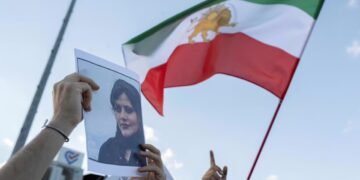Editor-in-Chief: SHAPOUR-T
Middle East Developments: A Region in Transition from Crisis to Stability
The Middle East has long been at the heart of global geopolitical transformations, remaining a volatile arena of regional and international power struggles, persistent crises, and emerging challenges. Understanding the current dynamics of this region requires an in-depth examination of key influencing factors.
1. Regional and International Power Struggles: A Battle for Influence
Iran and Saudi Arabia: A Long-standing Rivalry Shaping Regional Order
The rivalry between Iran and Saudi Arabia, rooted in ideological, geopolitical, and economic dimensions, remains a defining factor in the region’s power balance. This competition manifests in various conflicts, including Yemen, Syria, Lebanon, and Iraq. While recent diplomatic efforts have attempted to ease tensions, the broader geopolitical rivalry between these two major players is far from over.
Turkey: An Ambitious Regional Power with an Assertive Foreign Policy
Turkey, under President Recep Tayyip Erdoğan, has shifted from a traditionally isolated stance to an assertive and interventionist foreign policy. The country has expanded its influence in Syria, Libya, and the Caucasus while maintaining complex relations with Gulf Arab states, Iran, and even Israel. Additionally, Turkey seeks to position itself as an economic and energy hub, further complicating the regional balance of power.
United States: Reducing Direct Involvement but Maintaining Strategic Influence
While the U.S. has withdrawn from Afghanistan and scaled back its military presence in Iraq and Syria, it remains a key player in the Middle East. Washington continues to support its traditional allies, such as Israel and Gulf Arab states, through security agreements, arms sales, and policies aimed at containing Iran’s influence.
Russia: A Rising Power Cementing Its Regional Presence
Russia has significantly expanded its influence in the Middle East, primarily through military intervention in Syria in support of Bashar al-Assad’s government. Beyond Syria, Moscow has strengthened economic and military ties with several regional players, positioning itself as a major actor in shaping Middle Eastern geopolitics.
China: Expanding Economic Presence Without Direct Political Engagement
Unlike other major powers, China has primarily focused on economic partnerships in the region. Through its Belt and Road Initiative, major energy deals, and investments in infrastructure, China is steadily increasing its presence in the Middle East. However, Beijing has largely avoided direct political or military entanglements, distinguishing itself from other global actors.
2. Regional Crises: A Legacy of Instability
The Yemen War: A Proxy Battleground for Iran and Saudi Arabia
The conflict in Yemen, which began in 2015, has become one of the world’s worst humanitarian crises. The war, involving Iran-backed Houthi forces and the Saudi-led coalition supporting Yemen’s exiled government, has not only devastated the country but also heightened regional tensions. Despite recent peace efforts, a lasting resolution remains uncertain.
The Syrian Crisis: A Prolonged War with Uncertain Outcomes
Since its outbreak in 2011, the Syrian conflict has evolved into one of the most complex civil wars of the modern era. Although Assad’s government, backed by Russia and Iran, has regained control over much of the country, opposition forces and Kurdish factions still control significant areas. The future of Syria hinges on both domestic political developments and international negotiations.
The Palestinian Issue: A Long-standing Conflict with Regional Implications
Despite the recent normalization agreements between Israel and some Arab states, the Israeli-Palestinian conflict remains a core issue in Middle Eastern politics. Israeli expansionist policies, rising tensions in the West Bank, and growing resistance movements continue to challenge the prospects for a peaceful resolution.
3. Economic and Social Challenges: A Test for Governments
Oil-dependent Economies: Strengths and Vulnerabilities
Many Middle Eastern countries remain heavily reliant on oil revenues, making them vulnerable to global energy market fluctuations. Efforts to diversify economies, such as Saudi Arabia’s Vision 2030 initiative, aim to reduce this dependence, but achieving long-term economic sustainability remains a major challenge.
A Young Population: An Opportunity or a Crisis in the Making?
The Middle East has one of the youngest populations in the world. While this demographic trend presents an opportunity for economic growth, high unemployment rates and a lack of sufficient job creation pose significant risks. Economic inequality and social dissatisfaction could fuel further unrest if these issues remain unaddressed.
Climate Change and Natural Resource Challenges
The Middle East is one of the most climate-vulnerable regions in the world. Water scarcity, rising temperatures, and increasing desertification threaten food security and economic stability, requiring urgent regional cooperation and sustainable resource management strategies.
4. Geopolitical Shifts: The Formation of a New Balance of Power
Normalization with Israel: A Shift in Regional Alliances
In recent years, several Arab nations, including the UAE, Bahrain, Sudan, and Morocco, have normalized relations with Israel. While these agreements have been welcomed by the West, they have also triggered domestic and regional opposition, indicating that their long-term impact on the region remains uncertain.
Iran-U.S. Tensions: A Pivotal Factor in Regional Stability
Since the U.S. withdrawal from the Iran nuclear deal in 2018, tensions between Tehran and Washington have escalated. The future of nuclear negotiations and the impact of U.S. sanctions on Iran’s economy will play a decisive role in shaping regional dynamics in the coming years.
Conclusion
The Middle East remains a volatile region where power struggles, persistent crises, and emerging challenges continue to shape its trajectory. Achieving lasting stability requires proactive diplomacy, regional cooperation, and strategic policymaking. Whether the region moves toward peace and development or further instability depends on the decisions of key players and their willingness to engage in meaningful dialogue.










































